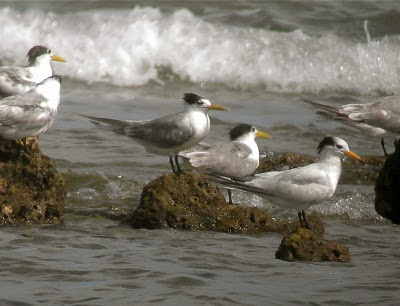Dear members,
Sarawak Museum is inviting our members to attend a public talk that our honored Earl of Cranbrook will give here in Kuching entitled:
"Pattern and puzzles: a new look at the zoogeography of Borneo Mammals"
Date: 29 April 2011
Time: 3 pm
Venue: Sarawak Museum, (new wing). Please come through Jalan P. Ramlee, next to RTM if you drive.
Bilik Niah, Dewan Tun Abdul Razak
Dato Sri Earl of Cranbrook is the Honorary Curator of Mammals at the Sarawak Museum and will be in Kuching from 24th to 30th April 2011. He had also worked in the Sarawak Museum in 1957 as a Museum Technical Assistant.
All are welcome.
 |
Bones from prehistoric times, Niah Caves dug during Tom Harrisson's time 1958 |
Abstract
The island of Borneo straddles the equator from about 7 o N to 4 o S between 109 o – 119 o E, and is the most easterly large landmass of the South-east Asian continental shelf, known as the Sunda Shelf. The wild land and freshwater mammals of the island comprise about 285 species. Since the beginning of zoogeography as a discipline, it has been observed that at the level of family, genus and frequently species, there is close affinity between the mammal faunas of the Thai-Malaysia peninsula south of about 10° N, Borneo and the other Greater Sunda Islands (Sumatra, Java and Bali), leading to the recognition of this area as a zoogeographical subregion. It has also long been understood that the existence of a distinct Sundaic mammal fauna reflects periodic exposure of the bed of the South China Sea during Plio-Pleistocene glacial episodes, which provided opportunities for migration and merger of populations.
In faunistic analyses it has been customary to treat Borneo as a single biogeographical unit. However, a review of well-documented species and subspecies, as defined by current opinion, shows a variety of distributional patterns within the island. Moreover, since the 1950s, archaeological discoveries have increased understanding of past distributions. Since the 1990s, molecular studies have shed new light on classical taxonomy and hence forced a revision of former zoogeographical assumptions. As we move into in the 21st century era of easy, rapid DNA analysis and molecular phylogenies, some surprising results are emerging.
This new evidence of regional and local speciation provides insight into selective processes and the time-scale of evolution. This information could assist the planning of measures to counteract the adverse impacts of global warming and human pressure on the threatened wild mammal resource of Borneo and the subregion.


















